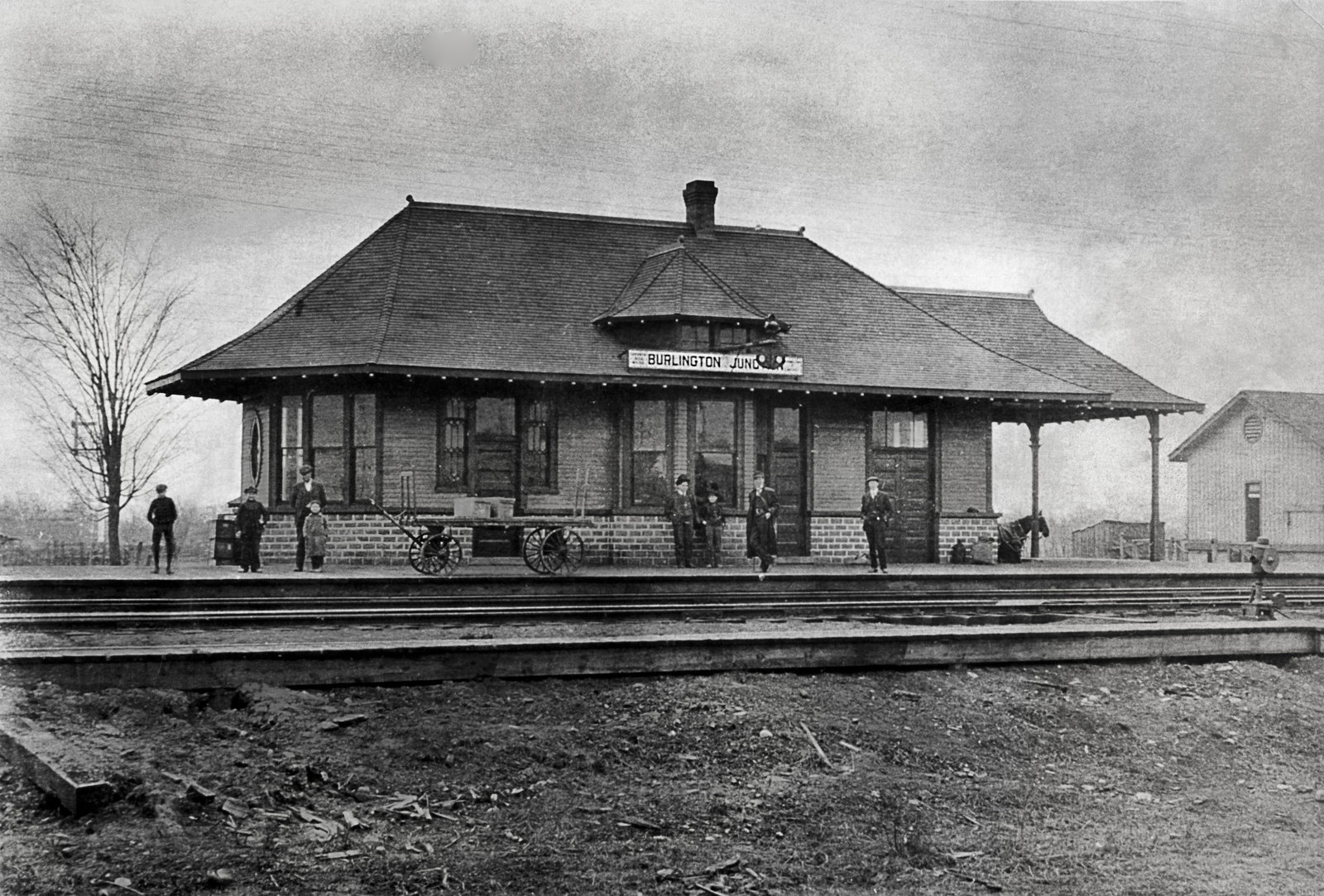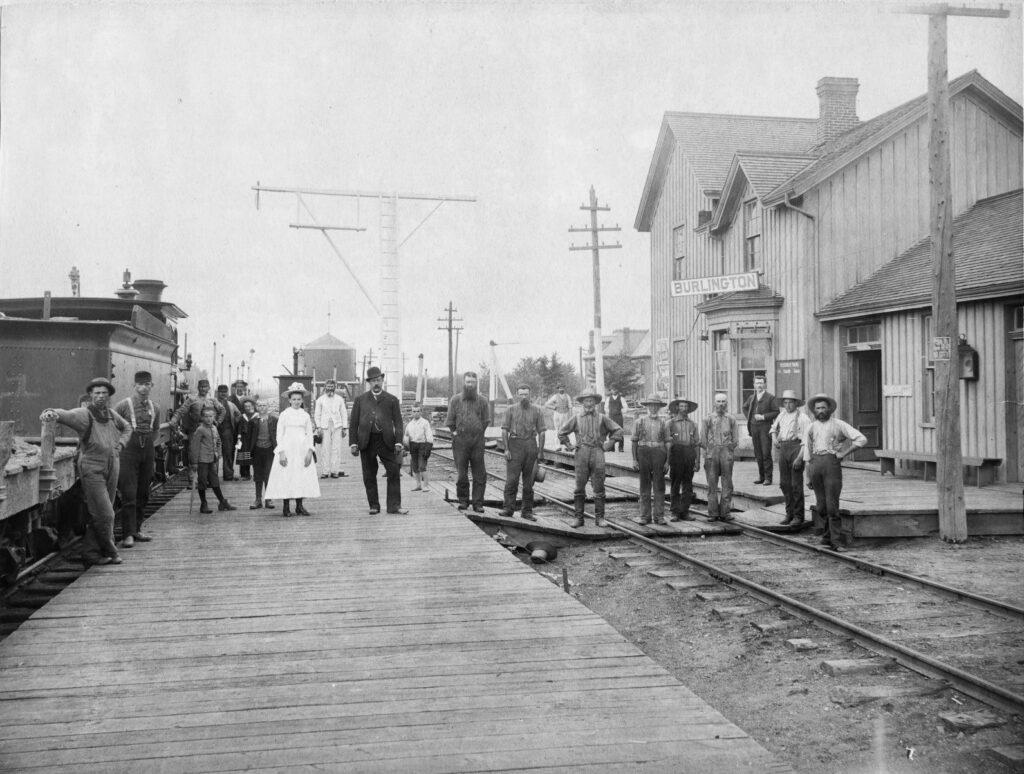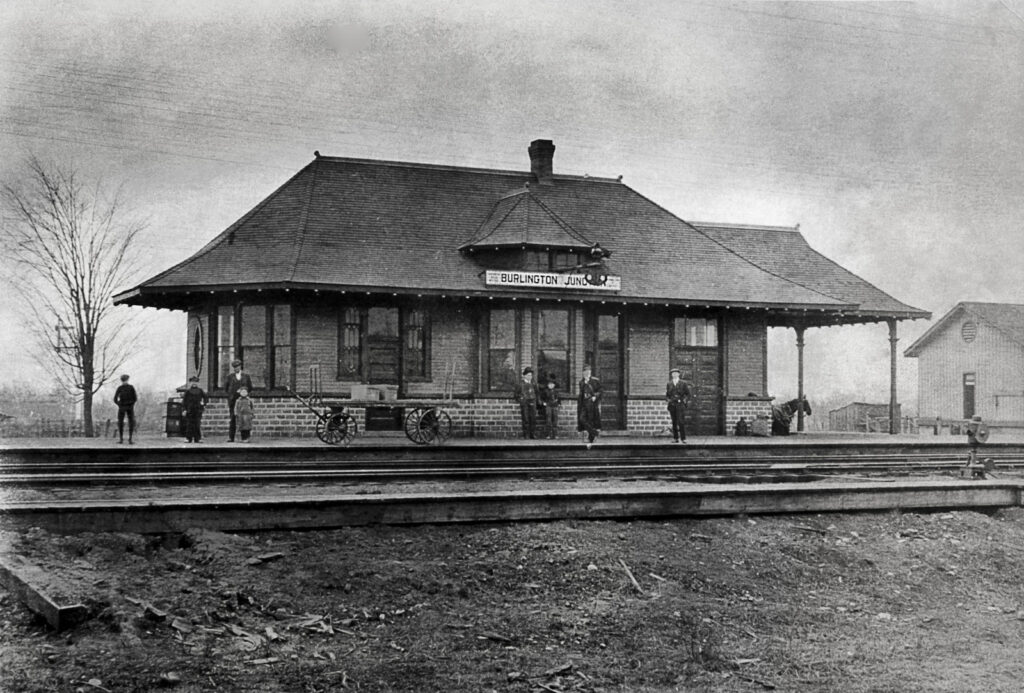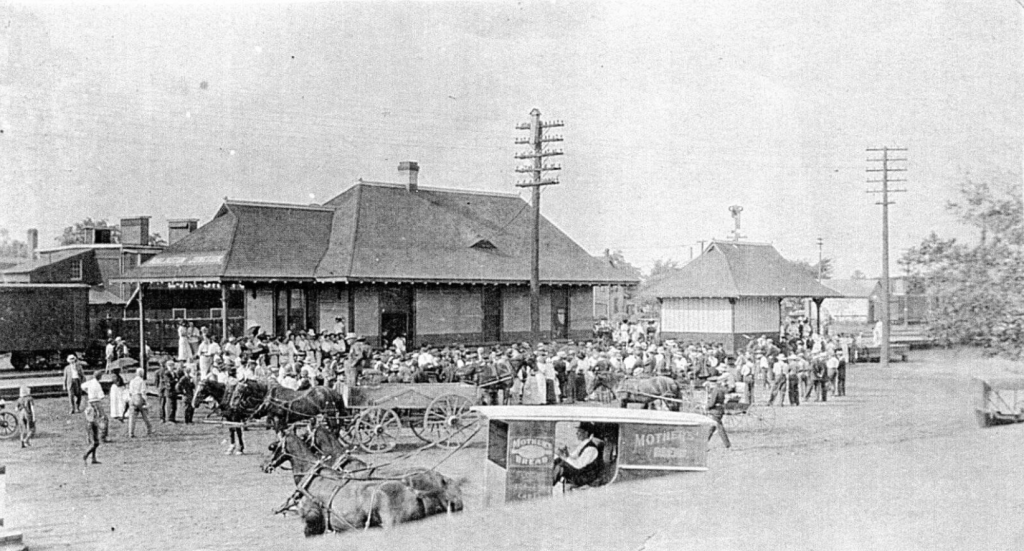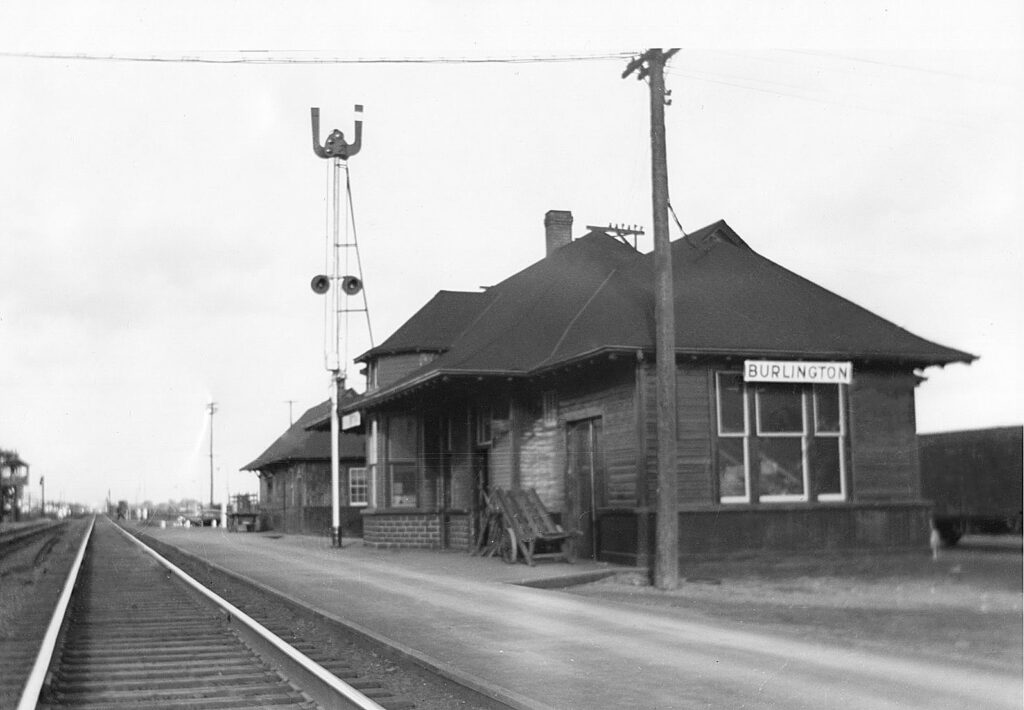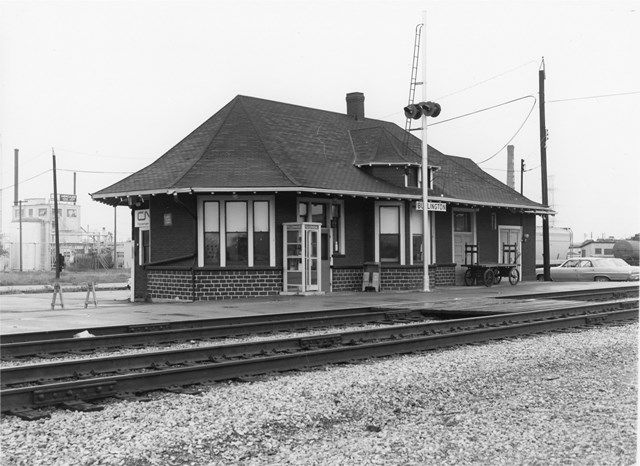Summary
The first station in Burlington was built by the Great Western Railway in 1855 while construction was progressing between Hamilton and Toronto. While there are few photos of this first station, it was a single-storey wooden structure with basic amenities for the relatively small population of Burlington at the time. The Village of Burlington was incorporated just over twenty years later in 1872. The Hamilton & Northwestern Railway arrived in Burlington shortly thereafter in 1875, running southwest to northeast at grade across Great Western immediately to the east of the station.
A year after the Grand Trunk Railway acquired the Great Western in 1882, the station was engulfed in flames under suspicious circumstances. The fire began in a part of the building where there should have been no flame as the station’s boiler was located elsewhere. The adjacent freight shed and a boxcar were also damaged and the station agent lost his personal effects, though no one was injured. A replacement station was built by the Grand Trunk Railway shortly thereafter, designed by Joseph Hobson who had previously worked for the Great Western. It utilized one of Hobson’s designs that had been used by the Great Western in previous decades, having a second floor above the waiting room and station agent’s office, and a freight room extending outward to one side. A total of 13 trains would stop at Burlington in 1886. Traffic would increase after the Northern Railway was merged into the Grand Trunk in 1888, and its passenger trains were routed through the Grand Trunk station in 1904.
Fire would claim the second station that year, and a third replacement would be complete two years later in 1906. The new structure, while smaller than the previous one followed a design more characteristic of the Grand Trunk at the time. It was built from a combination of wood and brick exterior walls with part of the roof extending out to one side acting as a shelter for passengers. This was turned into an addition in later years. After the financially ailing Grand Trunk was merged into Canadian National in 1923, passenger service had increased to 17 trains per day by 1941. This included several trains operated jointly by Canadian Pacific and the Toronto, Hamilton & Buffalo Railway who gained trackage rights to Toronto over the CN line several decades earlier.
The popularization of automobiles in the mid to late 20th century resulted in a decline in passenger ridership. This was further affected by the completion of a four-lane divided highway initially called the Middle Road, now known as the Queen Elizabeth Way between Toronto and Hamilton. It ran parallel to the railway less than a kilometer north of Burlington Station. By the 1950’s a pair of “flag stop signals” were added onto the existing order board mast in front of the station. These lights were activated by passengers to signal to an approaching train that there was someone to pick up. This was an attempt at making passenger service more economical as ridership declined, preventing unnecessary stops for stations that saw fewer passengers over time. CN ceased passenger service to the station entirely in 1977 with the formation of VIA Rail, and cross-border traffic previously handled by the TH&B resumed with Amtrak’s Maple Leaf in 1981. GO Transit service was extended to Burlington the previous year, at which point the station had been renamed to Burlington West. It was closed to passengers in 1988, after which GO Transit opened their own Burlington Station nearby. After facing an uncertain future, voices in the community who were motivated by the destruction of Aldershot’s historic station earlier in the decade pushed for preservation. The City of Burlington purchased the structure in 2005 for one dollar, after which it was moved off its foundation a half kilometer to the south. It’s since been restored by the Friends of Freeman Station who operate it as a museum.
Condensed Station Info:
| Location: | Served By: | Current State: | Date Built: | Date Demolished/Burned: |
| Grays Lane | GWR (1855 – 1882) GTR (1882 – 1923) CNR (1923 – 1977) VIA Rail (1977 – 1988) Amtrak (1978 – 1988) | Burned Down (First) Burned Down (Second) Moved and Restored (Third) | 1855 (First) 1883 (Second) 1906 (Third) | 1883 (First) 1904 (Second) N/A (Third) |


